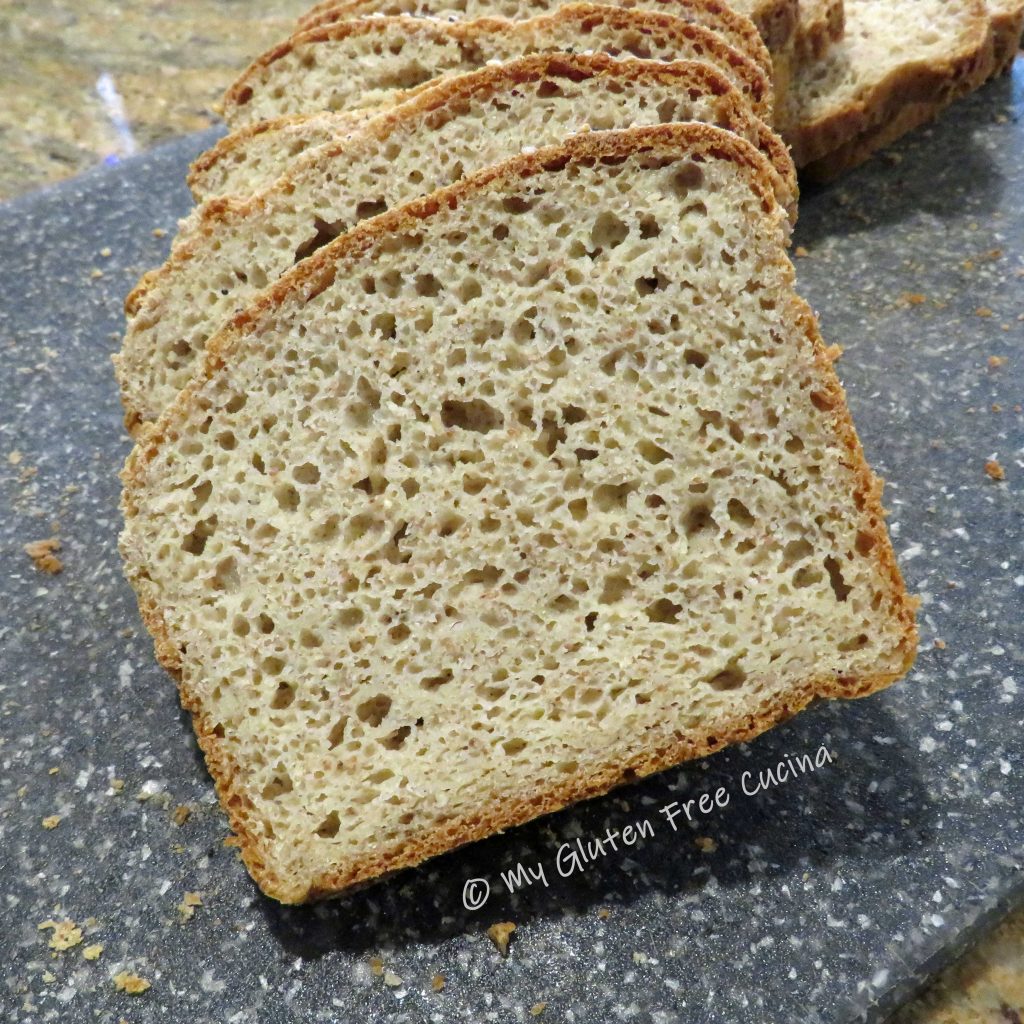When I began baking with gluten free sourdough a couple of years ago, I couldn’t imagine all the things that I would make with my starter “Sophie“. I started out with the usual rolls and loaves, made pancakes with discard, and even a quick bread.
Then one day, I decided to step out of my comfort zone with this beautiful Gluten Free Pain d’Epi, also known as Wheat Stalk Bread (I know, ironic).
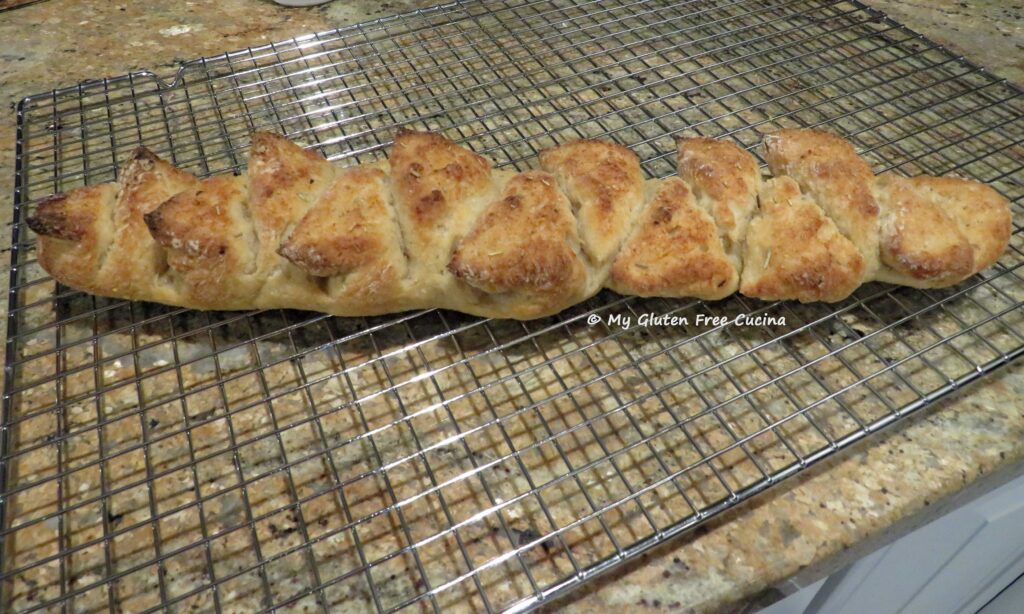
Of all the bucket list recipes I had to try once I got my gluten free sourdough starter established (read about it here), this one was at the top of the list.
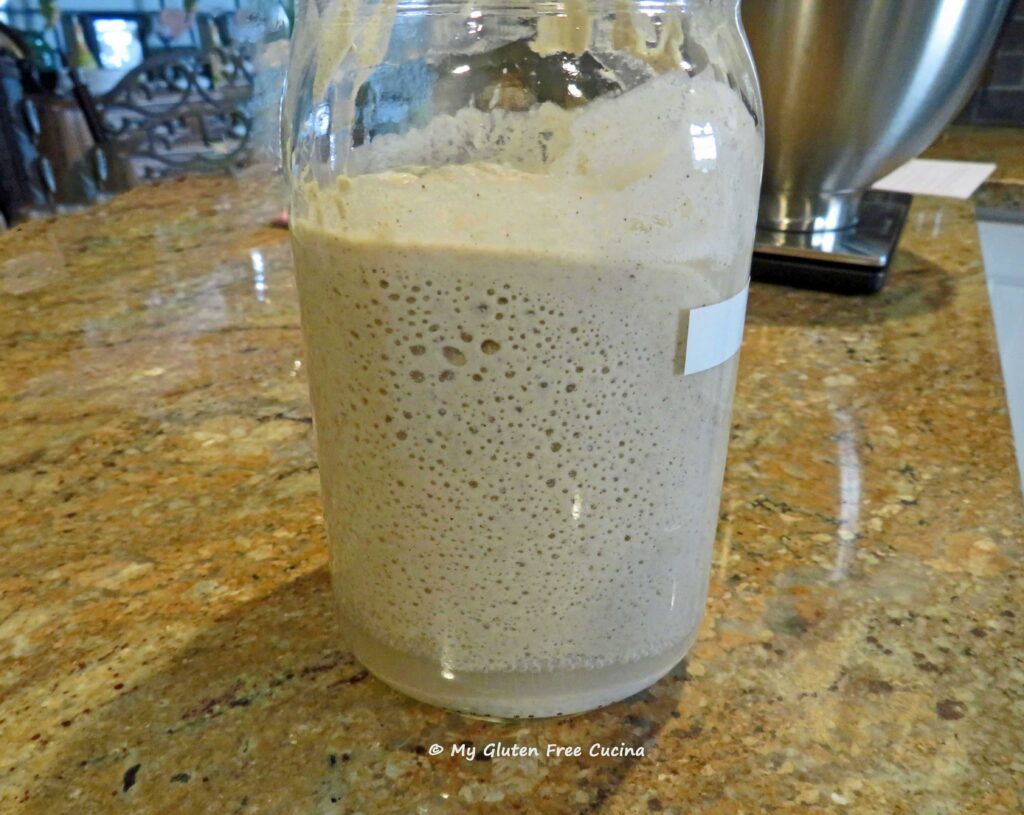
This was my first time making a gluten free version of Pain d’Epi and it was SO good. The most important thing you need to know about this recipe is that your starter needs to be fully active, discard will not work. That means there is some forethought involved, you will need to plan ahead depending on how long it takes for your starter to get up to full speed. Also take into account the overnight proof, and you will likely need at least 2 days of (mostly hands off) time for preparation.
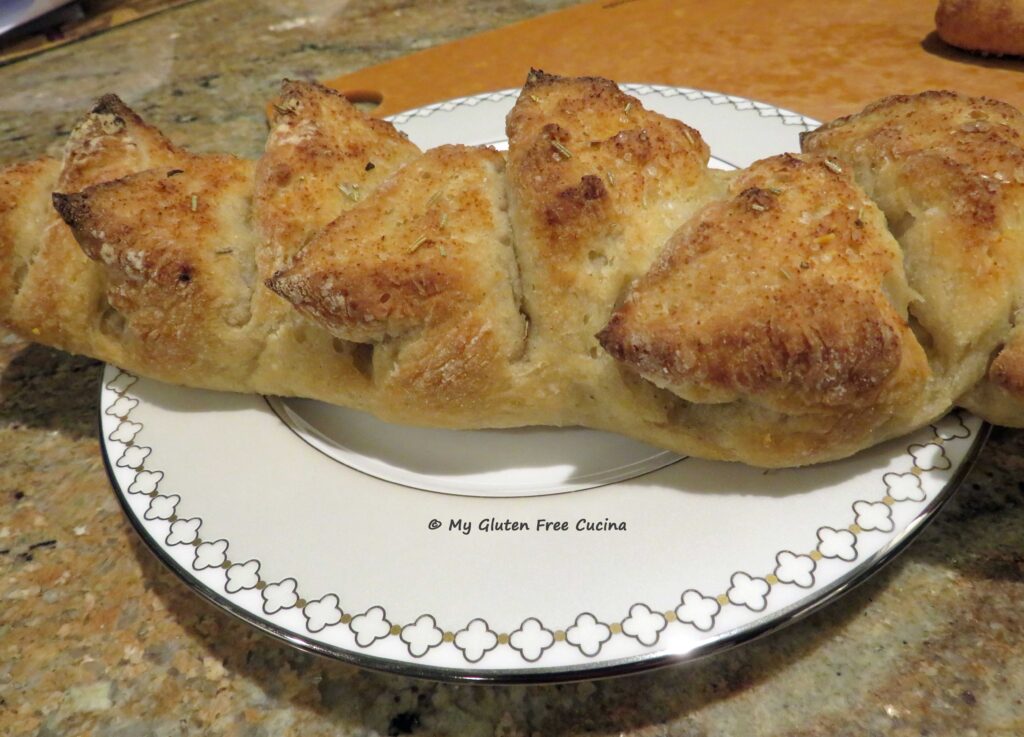
This post contains affiliate links.
The Flour
For the flour, I used the Artisan Flour Blend from Better Batter and as usual it did not disappoint. The flavor was fantastic, and the bread was perfect for dipping. You can absolutely use their Gluten Free Bread Flour, if you prefer a white bread. Or use 100g of each, I love doing that!
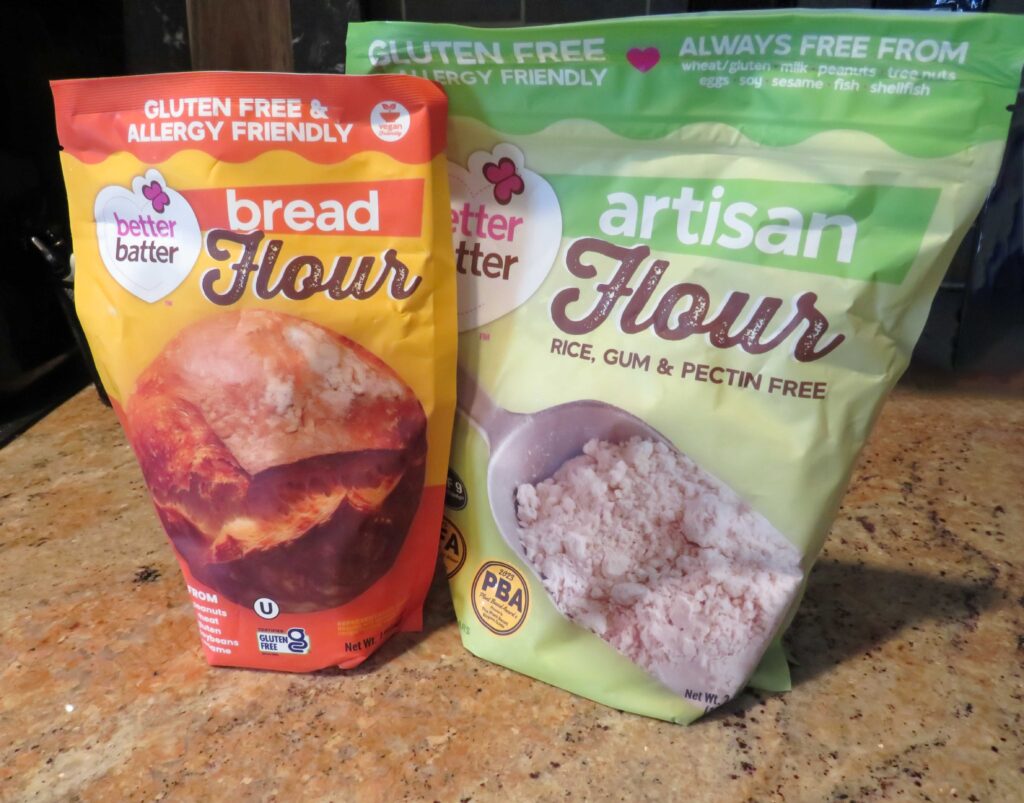
Ingredients:
- 200g Better Batter Artisan Flour Blend or Bread Flour about 1-1/2 cups
- 4g salt, about 1 tsp.
- 200g warm water, about 1 cup
- 70g active GF sourdough starter, about 1/4 cup
- 8g olive oil, about 1 tbsp.
- 10g honey, about 1 tbsp.
- more olive oil for brushing
- coarse salt, for topping
Preparation:
Combine the flour and salt and whisk well. Add the starter, honey and olive oil to the bowl of a stand mixer with the paddle attachment. Gradually add the flour mixture with the warm water. Increase the speed and knead for 5 minutes to form a soft, supple dough.
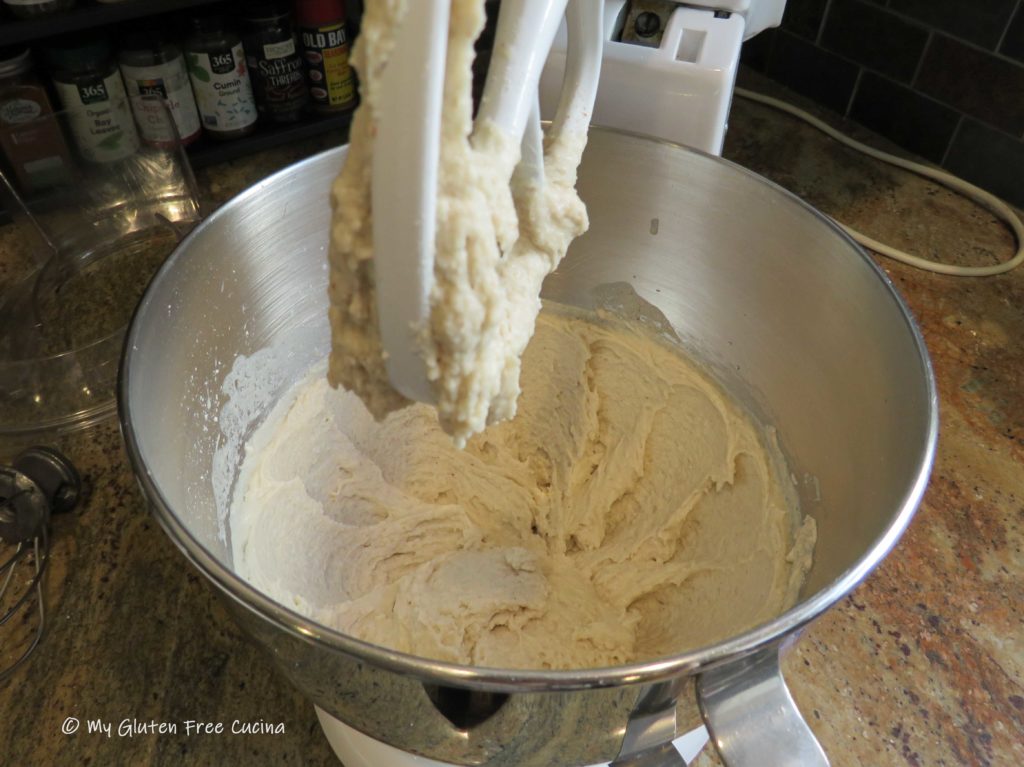
Transfer the dough to an oiled bowl, cover with plastic wrap and proof in a warm place for 4 hours. I used my proofing box.

Here is the risen dough. Place it in the refrigerator overnight to really develop the flavor.

The next morning, bring to room temperature. You can see how nicely the dough has puffed up, and there are lots of happy air bubbles!

It smells so good already!
Preheat the oven to 425º while you shape the dough.
First, transfer the dough to a floured cutting board and gently roll and shape it into a long thin baguette, about 15″ x 2″. Don’t apply pressure, you want to deflate as few of the air bubbles as possible.

Line a baking sheet with parchment paper and sprinkle cornmeal down the center where you will lay out the loaf.
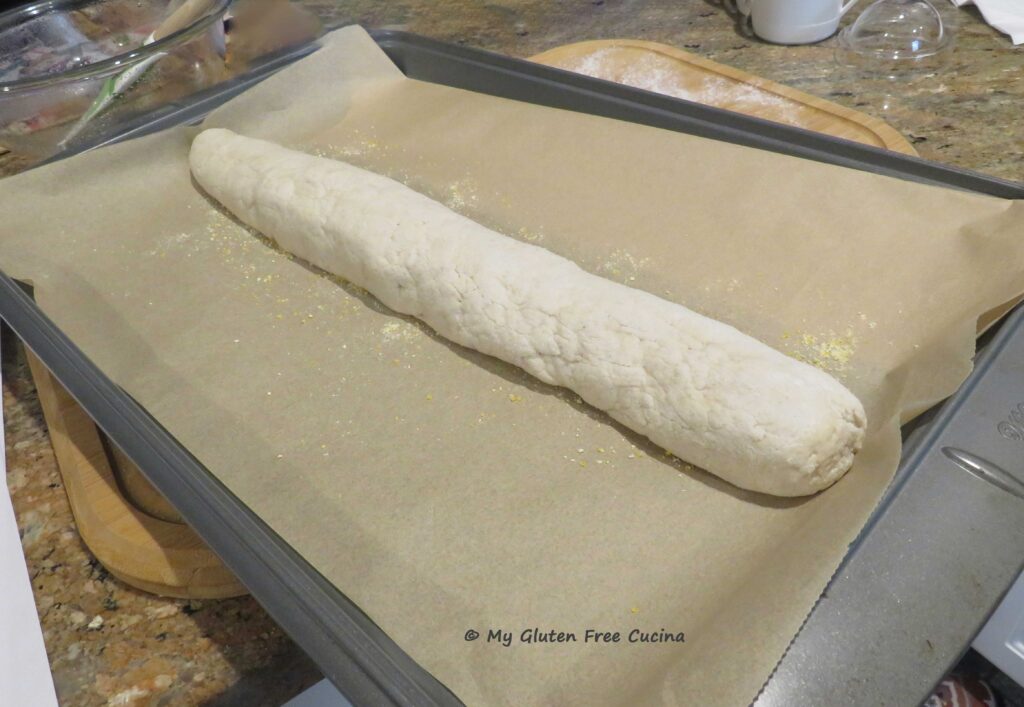
To create the wheat stalk pattern, use scissors to snip the loaf every few inches (cutting about ¾ of the way through), and as you snip each section, pull it over to one side, alternating left and right.
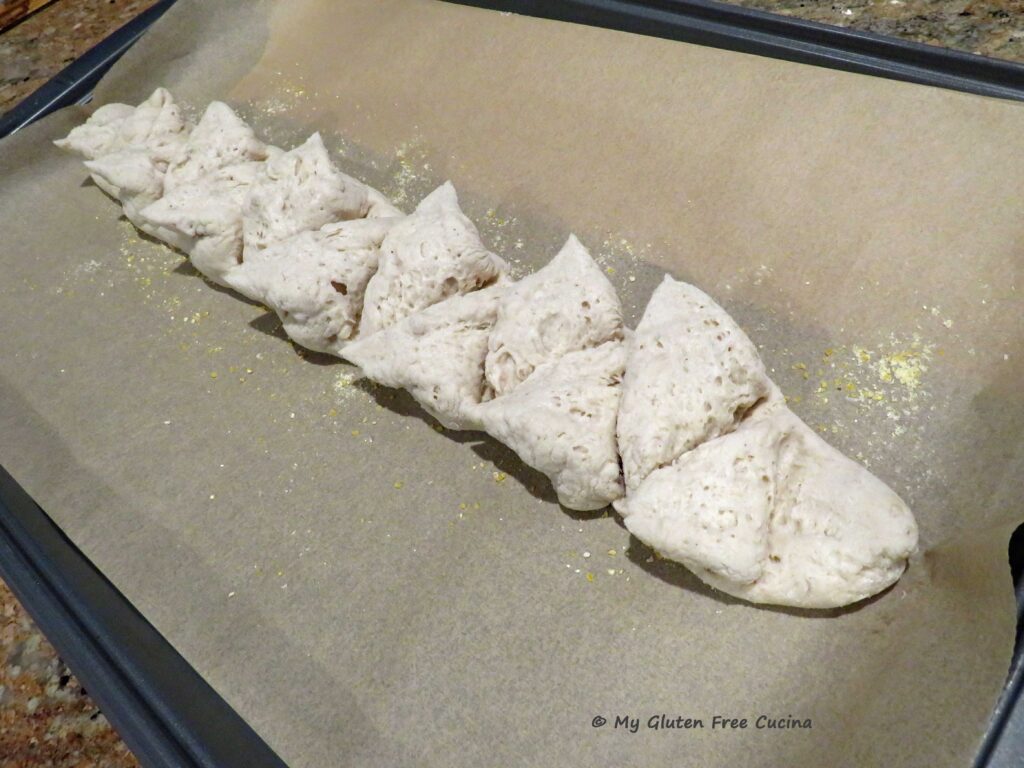
Now brush the loaf with olive oil and sprinkle with coarse salt. I infused my olive oil with garlic and rosemary, and the aroma as it baked was wonderful.
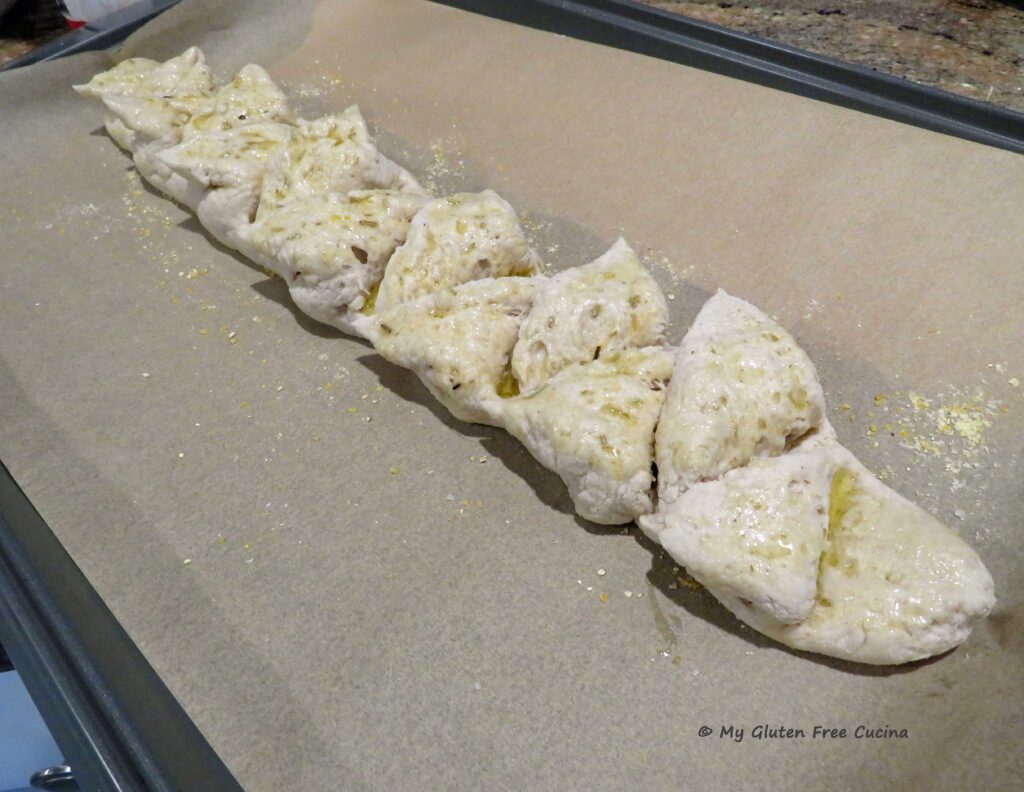
Bake for 30 minutes on the middle rack. The internal temperature should read 210º. Cool in the pan for 10 minutes.
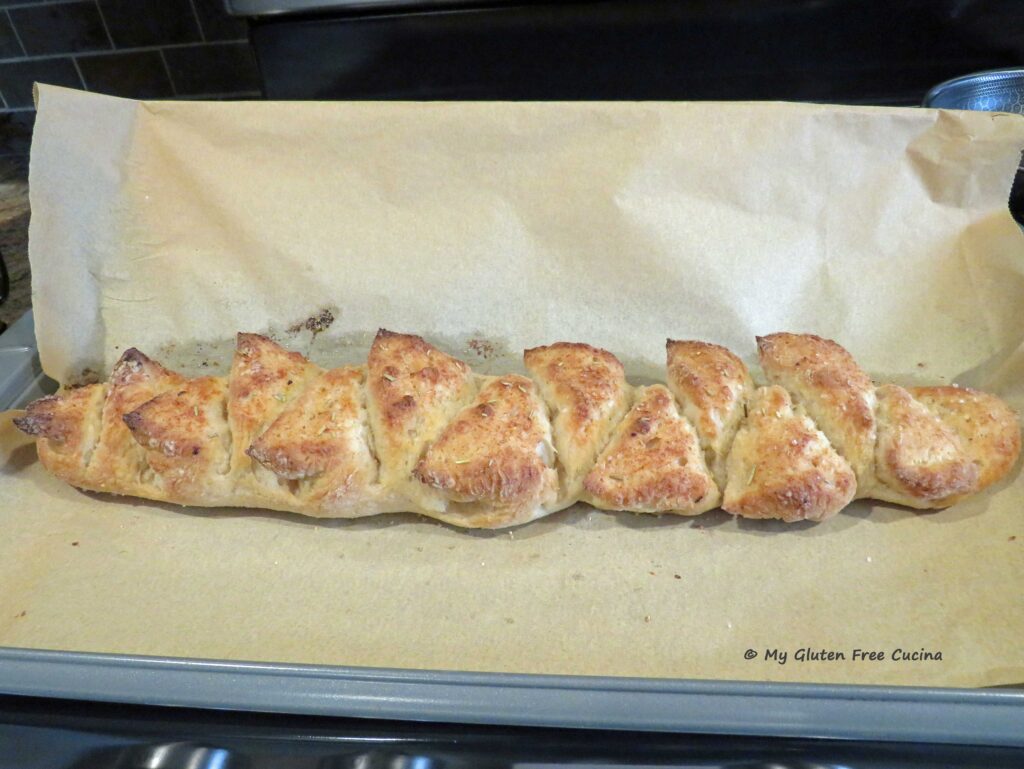
I love the smell of freshly baked bread filling my kitchen and was so pleased with how this loaf came out.

I recommend you allow the bread to cool for at least 4 hours before slicing, so the center won’t be gummy. Trust me, you will have a hard time waiting!
 You can cut it into slices or just tear off a section and dip it in olive oil. I made up a dipping oil with Tuscan seasoning, fresh garlic and rosemary.
You can cut it into slices or just tear off a section and dip it in olive oil. I made up a dipping oil with Tuscan seasoning, fresh garlic and rosemary.
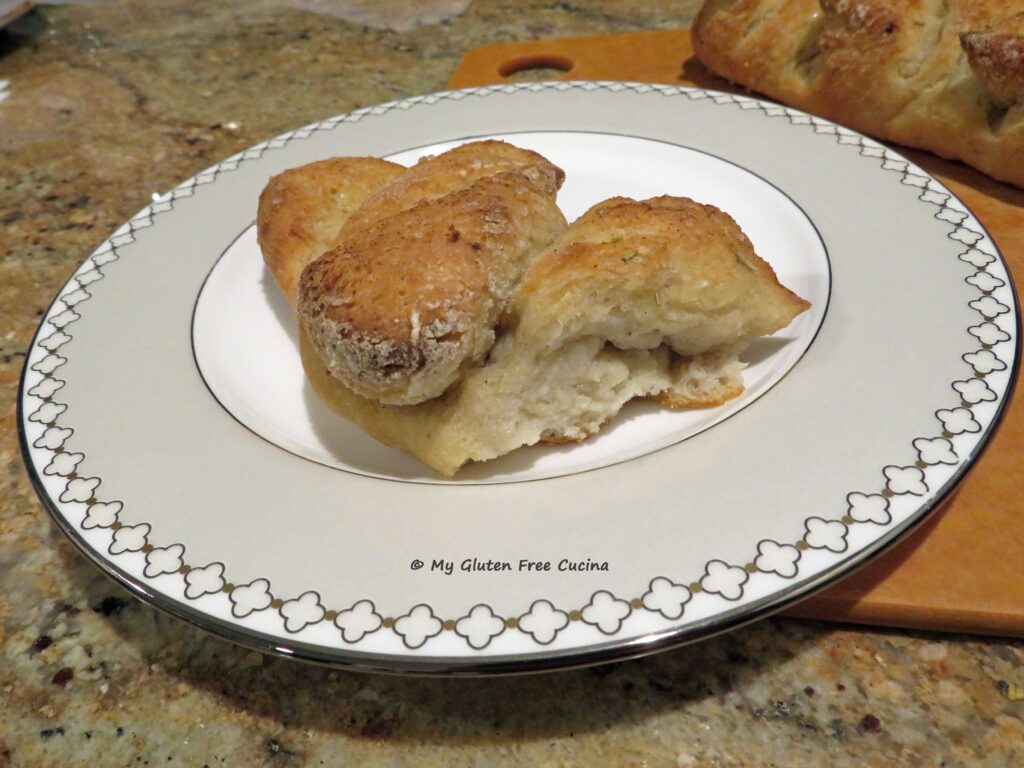
This bread is best eaten the day it is baked. Leftovers can be refreshed in the microwave or toasted. Store at room temperature up to 1 day and freeze any remaining.

Notes ♪♫ A sourdough starter will take your gluten free baking to the next level with results you never dreamed possible. Read about my sourdough starter Sophie here.



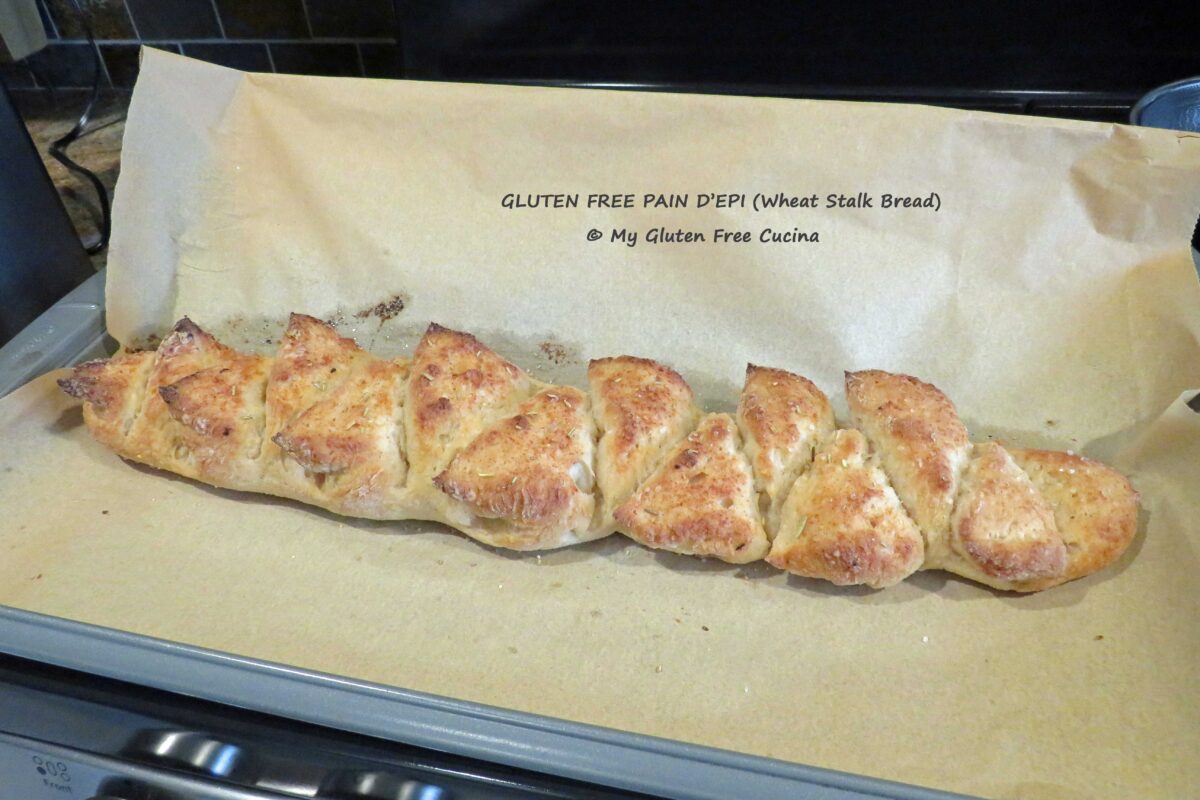


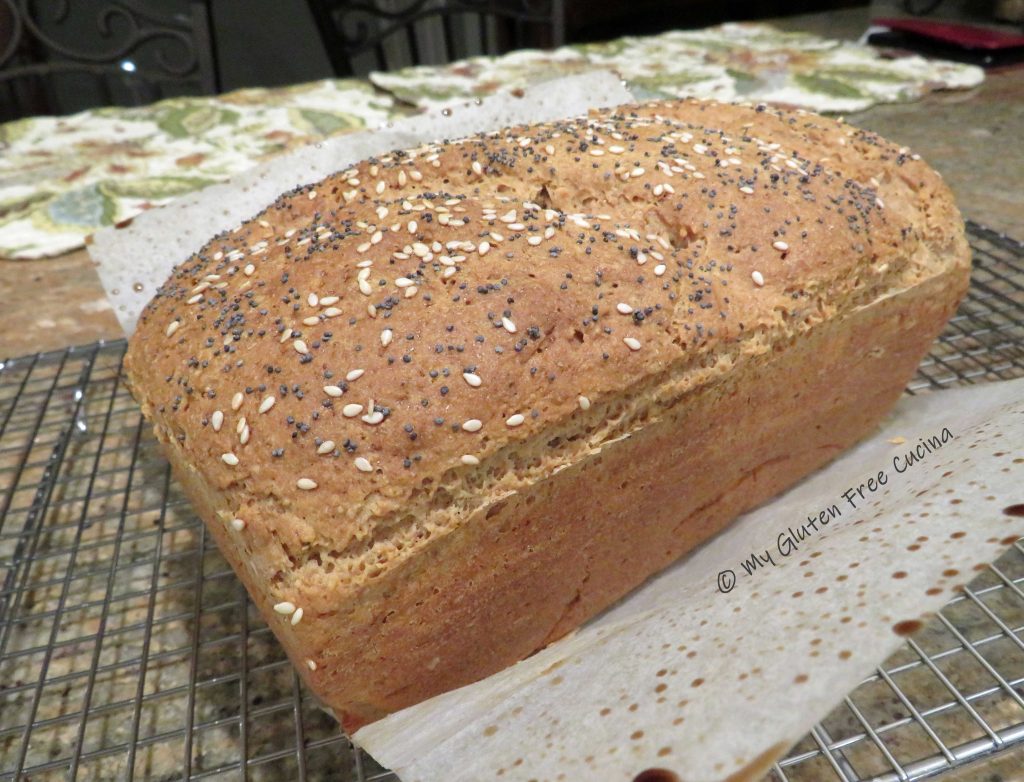
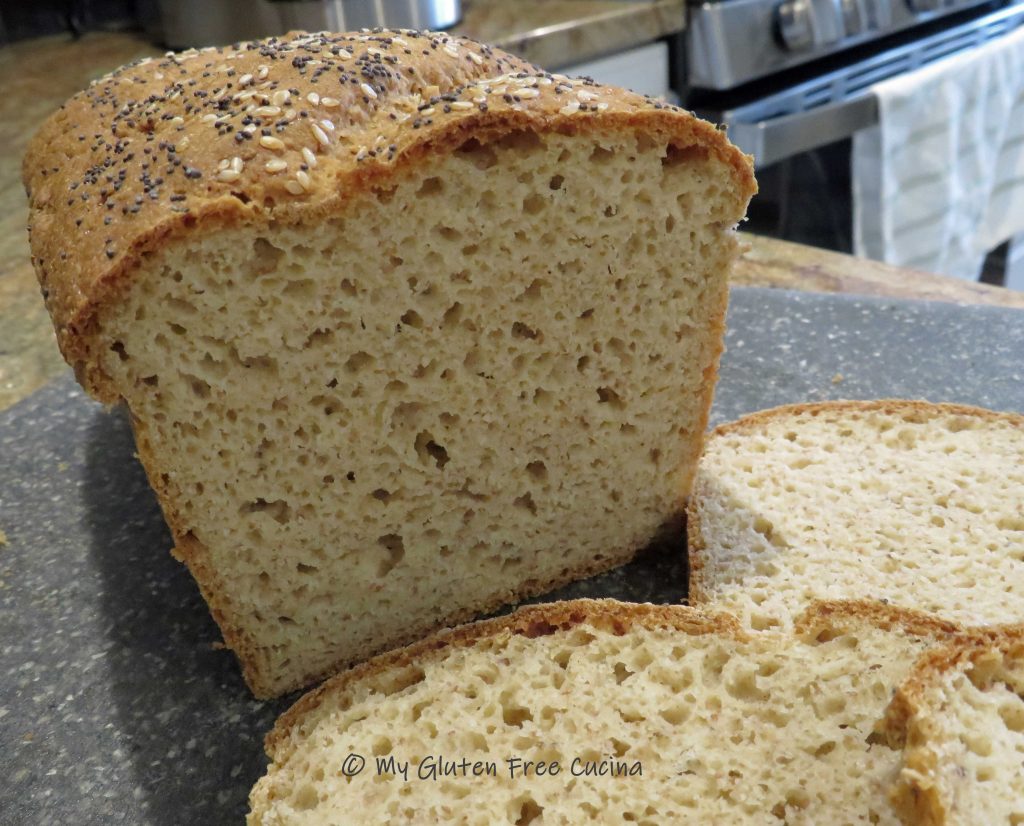
 Combine the yeast, ground chia seeds, sugar and 1/2 cup water in a small bowl or measuring cup. Let the mixture rest for 10 minutes.
Combine the yeast, ground chia seeds, sugar and 1/2 cup water in a small bowl or measuring cup. Let the mixture rest for 10 minutes.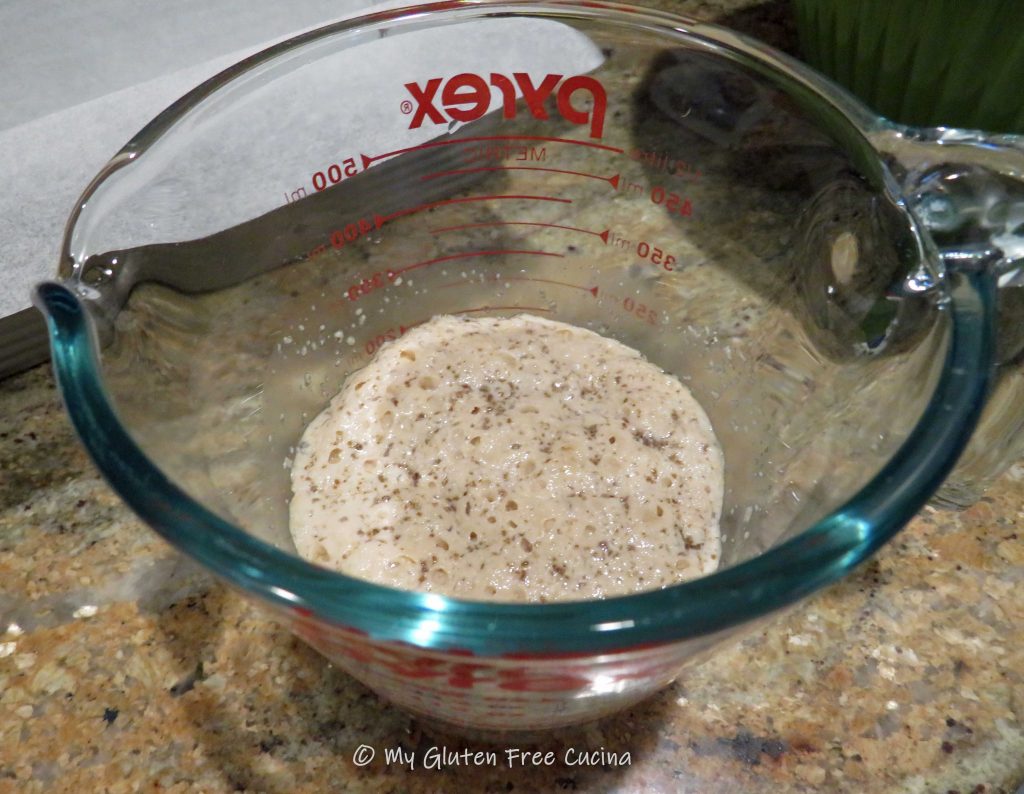
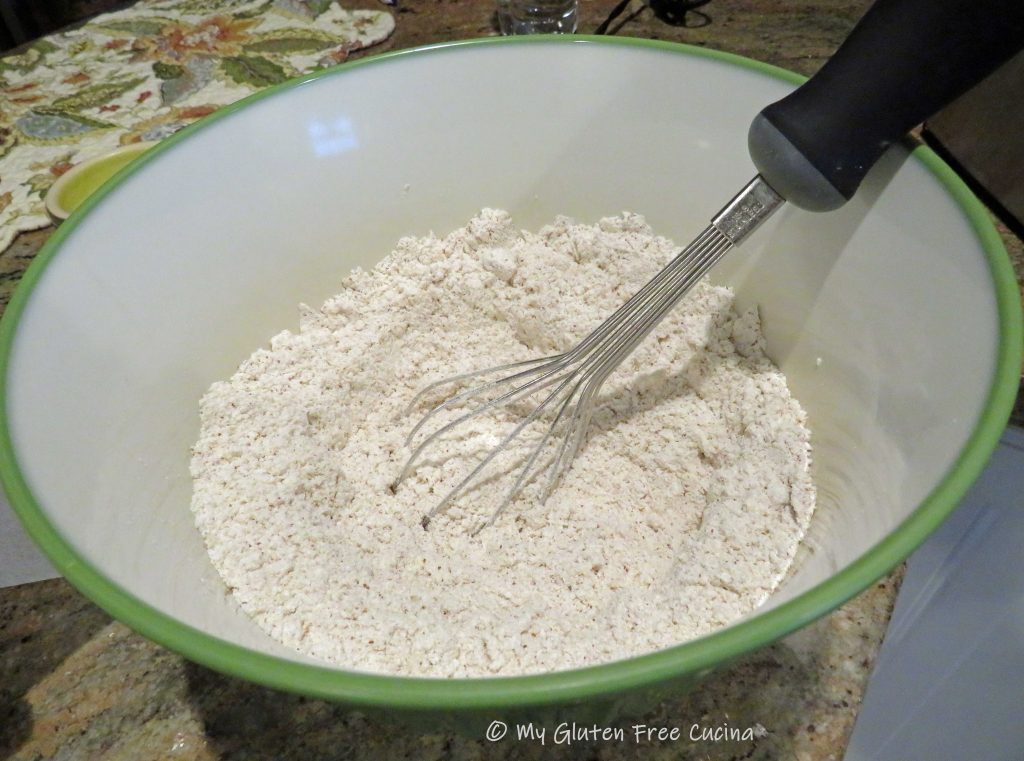
 Whisk it all together, and then add the dry ingredients into the wet. Mix for 5 minutes with the paddle attachment. The dough will be heavy and wet.
Whisk it all together, and then add the dry ingredients into the wet. Mix for 5 minutes with the paddle attachment. The dough will be heavy and wet.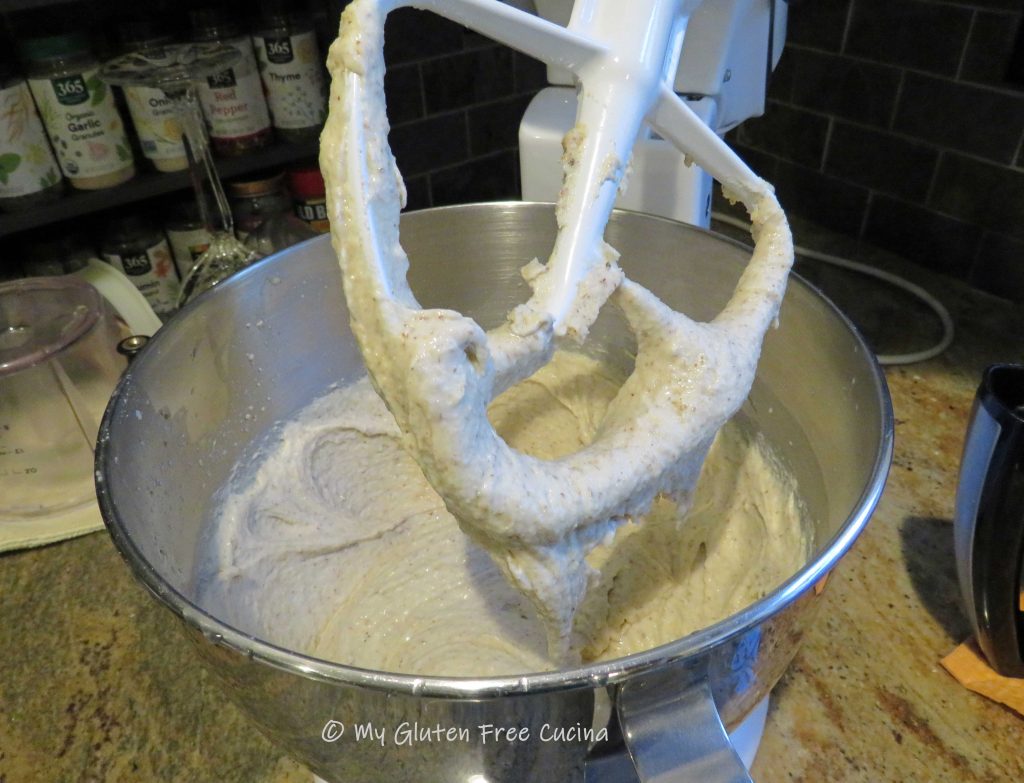
 Scrape the dough into the prepared pan, smoothing out the top with a spatula dipped in water.
Scrape the dough into the prepared pan, smoothing out the top with a spatula dipped in water.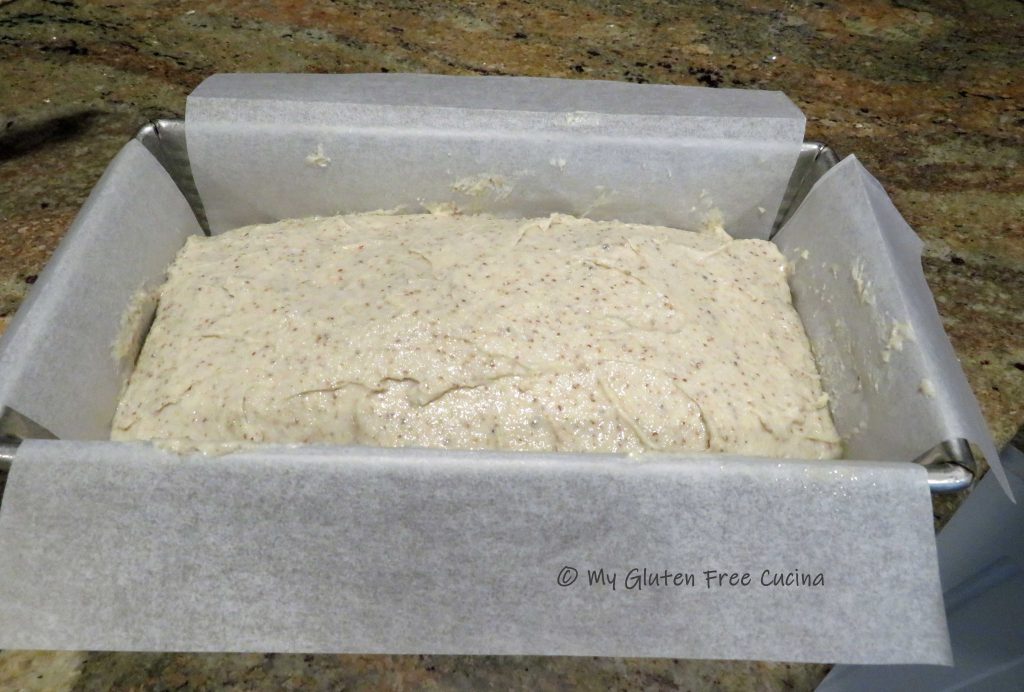
 Quickly make 2 diagonal slashes across the top of the loaf with a sharp knife.
Quickly make 2 diagonal slashes across the top of the loaf with a sharp knife.

 Cool to room temperature, then
Cool to room temperature, then 